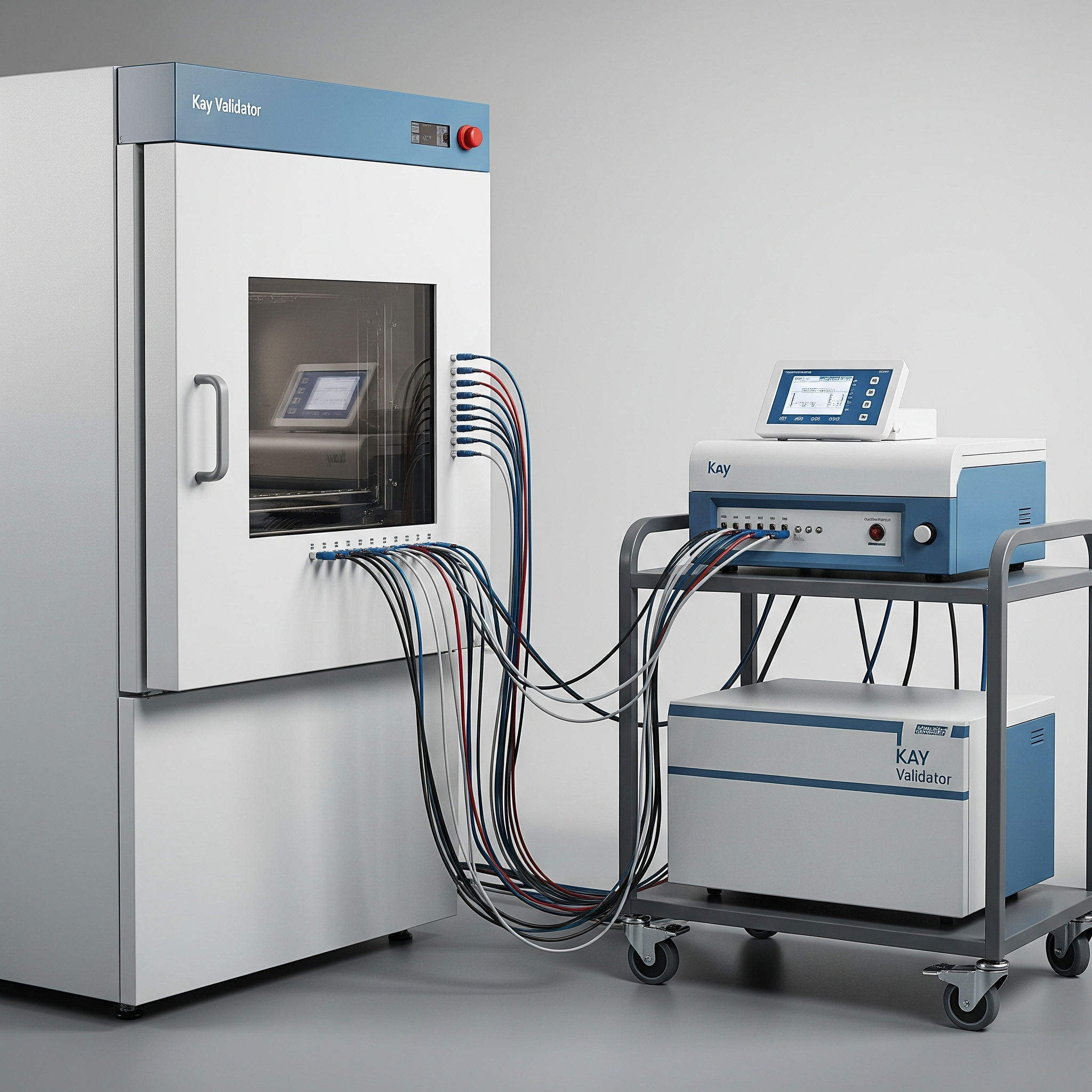Stability studies are critical for ensuring the safety and efficacy of pharmaceutical products over time. However, managing the risks associated with these studies presents a considerable challenge. These risks can stem from numerous factors, including sample degradation, environmental fluctuations, potential contamination, sample loss, testing delays, and human error. To maintain the integrity of stability study samples, stakeholders must implement robust risk management strategies that address these potential issues. By proactively identifying and mitigating these risks, organizations can ensure the reliability of their stability data and ultimately guarantee the quality of the products they release to the market.
Effective sample management is essential for maintaining the integrity and accuracy of laboratory results. This involves thorough attention to details relating to parameters such as proper labeling, storage, and handling of samples.
Lack of stability sample control is a frequent audit finding, as evidenced in these citations from the FDA:
- “FDA investigators observed hundreds of samples in storage chambers. When asked to see the sample logbooks for these chambers, the investigators were informed that no logbooks were maintained identifying the contents of the stability chambers.”
- “… the list does not indicate when the samples were initially placed in the chambers, when these have been removed for interval testing and returned to the chambers, and how long these samples have been stored in the two chambers.”
- “The number of units placed on stability according to both Stability Protocols, differ from the number of units sampled for stability and documented in the BMR’s for Lot #207070I and Lot #208070I. There are no records in place to demonstrate the location and storage condition of the remaining units.”
This article will discuss risks associated with stability sample management and examine ways to address the risks through process control and digitalization.
The Sample Management Lifecycle
Sample Management includes accurately and uniquely identifying the sample and those involved in its creation, authorizing movement, preserving the history of location and movement, removing contents, determining the purpose of removed contents, creating subsamples, testing samples, and exhausting or destroying them.
Thus, Sample Management covers the complete lifecycle of a sample, as depicted in the Figure below. The lifecycle begins with obtaining the necessary quantities of stability samples from Order Creation. It ends with Exhaustion or Destruction, which includes documenting the date, time, means, and person responsible for exhausting the last sample from the chamber or destroying any remaining samples after study termination. The intermediate steps of Management Authorization, Sample Movement, and Subdividing/Testing are iterative steps that continue until the final testing time interval is completed, where we move to Exhaustion/Destruction.

Cast of Stakeholders
Management, Operations, Packaging, Quality Assurance, Quality Control, Sample Handling Group, Stability Group, Laboratory personnel, LIMS participants, Shipping, and Transportation are among the key stakeholders in the sample management process. To ensure success, they must be aware of their roles and the roles of their teammates.
Risky Business, What can go wrong with Sample Management?
The tables below show examples of identified risks and digitalization strategies to control or mitigate the risks based on the various phases of the Stability Sample Management Lifecycle. It should be noted that due to economic or resource constraints, not all risks can be addressed concurrently.
Generally, prioritization to implementing control strategies is given to those risks with a high likelihood of occurrence and resulting in a high impact.
Lifecycle Phase 1: Order Creation – This phase includes selecting appropriate stability sample batches and manufacturing, packaging, labeling, and storing the samples.
| Risk | Mitigation Strategy |
|---|---|
| Labeling Errors: Incorrect sample labeling can lead to confusion and errors in testing and data analysis. This can result in inaccurate expiration dates being assigned to products. | Barcode labeling system for sample and carton labeling. Both human-readable and computer-readable data are displayed on the labels. |
| Sample Degradation: Improper sample storage conditions, light exposure, or chemical instability can cause samples to degrade prematurely, rendering them unsuitable for testing. | Inventory functionality allows complete tracking of stability samples from cradle to grave and reduces the risk of a sample being stored in incorrect conditions. |
| Sample Storage Conditions: Storage conditions in stability chambers are not tightly controlled or monitored, causing premature sample degradation. | Chamber temperature and humidity should be monitored regularly to maintain storage conditions. Real-time alerts can be triggered for deviations, allowing prompt corrective action to prevent sample degradation. |
| Human Error: Mistakes made by personnel involved in sample management can lead to errors in expiration date determination. | Link manufacturing and Stability inventory systems for a smooth, traceable hand-off. Carryover sample handling alerts from manufacturing to the stability group. Track sample placement into holding locations. |
Lifecycle Phase 2: Management Authorization – This phase of the stability sample management lifecycle is for action, change, or deviation to keep sample utilization according to written protocols.
| Risk | Mitigation Strategy |
|---|---|
| Security Risks: Unauthorized access to samples or test data can compromise the integrity of the testing process and the security of confidential information. | User Management with permission/access controls built in. Role-based system access. User activity and Audit Trail functionality in Stability Study Management System. |
| Regulatory Compliance: Failure to comply with regulatory requirements for stability testing can lead to product recalls, fines, and other legal consequences. | Managing sample inventories and testing results in a validated 21 CFR 11 compliant Stability Study Management System. |
| Human Error: Mistakes made by personnel entering data erroneously into the Stability Study Management System, and Management does not catch the error and authorizes the sample or data. | Link manufacturing and stability systems to minimize transcription of sample or material information. The Stability Study Management System can flag transcribed/manually entered information. |
Lifecycle Phase 3: Sample Movement – (Chain of Custody) – includes movement, transfer, and tracking of samples per plans and written instructions
| Risk | Mitigation Strategy |
|---|---|
| Missed or Late Sample Pull: Sample pull is missed, or the sample is pulled from the chamber outside the due date window. | Email notifications from Stability Study Management System when samples are due to be pulled. Visual cues on logging in to the system indicate which samples are in the pull tolerance window. |
| Loss of Samples: Samples may be lost or misplaced, leading to testing delays and potential inaccuracies in expiration date calculations. | Barcode labeling system for samples which allows scanning samples in and out of chamber.
Both human-readable and computer-readable data are displayed on the labels. Robust chain of custody with sample possession and status tracking |
| Human Error: Personnel misplaces samples as there is no record of sample handoff/transfer. | Stability Study Management System allows for robust chain of custody. The location of any sample at any time is known. |
Lifecycle Phase 4: Subdividing and Testing – subdividing and testing while preserving identity, pedigree, purpose, and outcomes.
| Risk | Mitigation Strategy |
|---|---|
| Product Recall: If a product is found to be unstable or ineffective due to errors in stability testing, it may need to be recalled, which can be costly and damaging to the company’s reputation. | Trend (Regression) Analysis functionality in the Stability Study Management System allows users to see OOT or OOS results that may require investigation. |
| Missed Test Date Window: Sample is stored for too long, awaiting testing after being removed from the chamber. | Email notifications from Stability Study Management System when testing needs to be initiated.
Visual cues and pop-up messages on logging in to the system indicate which results are due to be entered. Reports showing open sample status and days until due are generated. |
| Data Integrity: Data entry or analysis errors can lead to inaccurate results and incorrect expiration dates. | Directly interfacing laboratory instrumentation to the Stability Study Management System.
Calculations are performed directly in the Stability Study Management System. |
| Data Loss: Accidental deletion or data loss due to system failures or human error. | Confirmatory prompt before data deletion. (Deleted data is still retrievable/restorable via audit trail system).
Redundant data storage on cloud or terminal server. |
Lifecycle Phase 5: Exhaustion or Destruction – includes documentation of date, time, means, and responsible person(s) closing out the inventory record
| Risk | Mitigation Strategy |
|---|---|
| Human Error: Accidental disposal of samples from the wrong study; waiting too long to dispose of samples from a study and not complying with SOPs; Accidental disposal of samples from a study before completion of testing, | Barcode labeling and tracking from cradle to grave, along with secondary verification and confirmation. |
| Sample Loss, Equipment Failure, Catastrophic Event (fire, flood, earthquake, hurricane): Stability samples are lost or destroyed, preventing completion of the study. | A contingency plan should be in place to address these potential issues. Redundant sample storage at a secondary remote location mitigates the impact of a catastrophic event. The Stability Study Management System allows for a dual inventory and tracking of samples placed in redundant storage. Stability sample information and test results are stored on a redundant server or cloud. |
Consequences of not addressing sample management risks
Failures in sample management for stability studies have serious consequences. Inaccurate or unreliable stability test results can cause incorrect shelf-life calculations, potentially putting patients at risk by releasing potentially unsafe and ineffective products. This could damage the pharmaceutical company’s reputation and, more severely, cause adverse health outcomes. Furthermore, regulatory noncompliance can occur, leading to fines, recalls, and manufacturing license suspensions. The financial implications of the lack of proper sample management practices are substantial, including the costs of repeating stability studies, wasted resources due to early product discard, and potential legal liabilities.
In addition to these company-specific consequences, failed sample management can damage public trust in the pharmaceutical industry. People rely on accurate shelf-life information on their drug products to ensure the safety and efficacy of their medications. When trust is compromised, it has an adverse impact on patient adherence to product instructions and their health. Digitalization solutions that facilitate robust sample management practices are crucial for maintaining the integrity of drug stability studies, safeguarding public health, and ensuring the success of pharmaceutical companies and the industry as a whole.
A comprehensive solution through digitalization
Technology can substantially mitigate the risks listed above and others as well. Digitalized systems can significantly enhance sample management and reduce risks in the stability process. For example, a sample pull report could be generated daily, not only for the stability logistics team but also for the lab, so each can check on the other, ensure expected samples were delivered, and initiate the required testing.
Implementing a robust sample tracking system, such as a dedicated digitalized stability study management system, can significantly streamline the process and reduce the risk of errors. Such a system allows us to know the location of every sample from the time of manufacture through pull/testing and finally through disposition/disposal. Additionally, regular audits and quality control checks are crucial to ensure adherence to established protocols and identify potential issues. By prioritizing stability sample management, organizations can enhance the reliability of their data, increase their efficiency, and reduce the risks that may lead to deviations and audit findings.
Automation of sample tracking, inventory management, and workflow processes reduces the risk of human errors, such as mislabeling or mishandling samples. The digitalized solution can generate detailed audit trails, documenting every step of the sample’s journey and ensuring accountability and traceability.
Furthermore, digitalized systems can monitor critical environmental parameters like temperature and humidity in storage areas. Real-time alerts can be triggered for deviations, allowing prompt corrective action to prevent sample degradation. Automated data transfer from laboratory instruments to Laboratory Information Systems eliminates the risk of transcription errors and ensures data integrity. By integrating these technologies, organizations can significantly improve sample management, reduce the risk of errors, and ultimately enhance the reliability of their results.
Summary
Every business, both small and large, should have a digital transformation master plan. Digitalization is no longer a nice to have; it’s a must-have, and companies that have already embarked on their digitalization journey are a step ahead. From drug development through commercialization, companies must prepare for ongoing digitalization. The quality-effectiveness of a digitalized process will be a critical factor in the years ahead as regulators continue to evolve requirements to keep up with new technologies and encourage regulated companies to use them. Watch for our future webinars and articles focusing on digitalization and transformation of the Stability Function.
About the Authors
Contributing Author: Susan B. Cleary, B.Cs, EMBA, Director of Product Development – Novatek International. Susan has more than 25 years of experience in designing, developing, implementing, validating, and managing large-scale LIMS (Stability Study dedicated) and Quality Management software projects while working with both Pharmaceutical and Biotech companies to capture their requirements and provide fully validated turnkey digitalized systems. Susan specializes in Laboratory Information Management, Stability Study Management, Environmental Monitoring, and Cleaning Validation processes and works with clients to digitalize their procedures and manage their data more effectively.
Contributing Author: Christopher Latoz, Stability Services Manager, Hollister Incorporated. Chris is Stability Services Manager for Hollister Incorporated, which develops, manufactures, and markets healthcare products and services worldwide. Chris has over 30 years of experience in the medical device industry in R&D, materials testing and characterization, and stability. While at Hollister, Chris has led process and capacity improvement projects, including the implementation of a LIMS (Laboratory Information Management System) for stability sample and data management, the construction of new walk-in stability storage chambers, and the implementation of a continuous temperature and humidity monitoring system for stability chambers. Chris is an American Association of Pharmaceutical Scientists (AAPS) member and serves on the United States Pharmacopeia (USP) Joint Subcommittee for Drug-Device Combination Products.
Contributing Author: John O’Neill. John is a life-long Stabilitarian with 50 years of experience in the medical product industry. His career has taken him from Registered Pharmacist to Liquids and Semi-solids Formulator at Sterling Winthrop, QC Manager at Sanofi-Aventis, Medical Device Quality Steward at Boston Scientific, Independent Consultant, Principal Stability Specialist for Biologics at Genentech, Associate Director for Stability at both Gilead and Regeneron, and is now the founder and editor of stabilityhub.com, an industry information website covering many aspects of the medical product stability function. John is also the founder and facilitator of the Pharmaceutical Stability Discussion Group, an organization dedicated to sharing trends, questions, solutions and experiences related to the stability function.
Share This Article with the Stability Community!
June 10, 2025
Disasters occur whether we plan for them or not, but planning ahead to mitigate their impact and recover from their damage can make a big [...]
June 2, 2025
So, you’ve gone through the process of formulating user requirements, chamber selection and purchase. With the equipment in place; how do we go from this [...]
April 26, 2025
It’s Stability Information Month and time to go a little further than regulations and processes and talk about people, namely the ones who comprise the [...]
Share your questions and experiences
A stabilitarian encounters new situations every day. StabilityHub’s discussion forums give Stabilitarians an opportunity to ask questions and offer solutions to specific scenarios. Join in the conversations with other Stabilitiarians and share your knowledge!
A stabilitarian encounters new situations every day. StabilityHub’s discussion forums give Stabilitarians an opportunity to ask questions and offer solutions to specific scenarios. Join in the conversations with other Stabilitiarians and share your knowledge!





